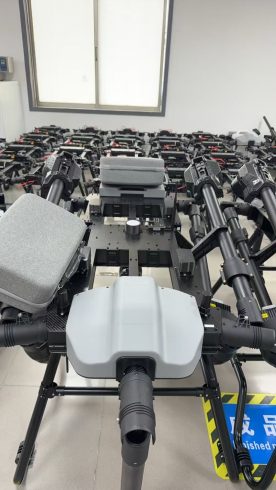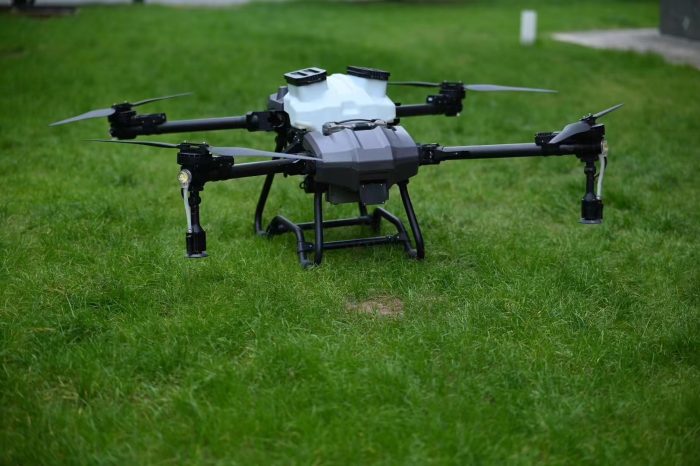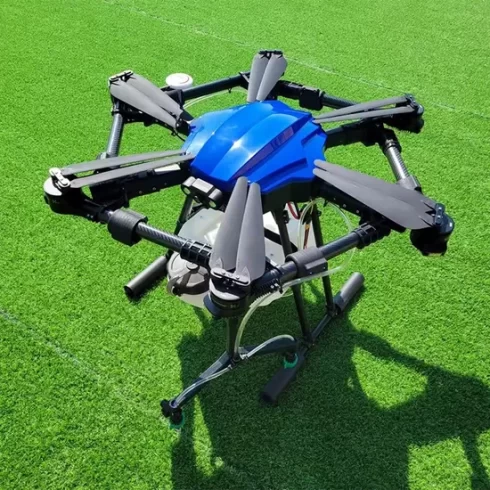![图片[1]-Top Features of Agricultural Drones: Revolutionizing Modern Farming-msoen](https://www.msoen.com/wp-content/uploads/2025/04/4e0da2d332214638-768x1024.jpg)
Agricultural drones are no longer just tools for aerial surveys—they’ve evolved into indispensable assets for precision farming, sustainability, and operational efficiency. As global food demand rises, these drones are redefining how farmers manage crops, monitor soil health, and optimize resources. This article highlights the key features that make modern agricultural drones a game-changer in farming.
- Precision Farming with Multispectral Imaging
Modern agricultural drones are equipped with multispectral, hyperspectral, and thermal sensors to capture data invisible to the human eye. These sensors analyze plant health by measuring chlorophyll levels, moisture content, and temperature variations.
- NDVI (Normalized Difference Vegetation Index): Identifies stressed crops, nutrient deficiencies, or waterlogging in real time.
- Thermal Imaging: Detects irrigation issues by mapping soil moisture and canopy temperature.
- 3D Topographic Mapping: Generates elevation models to plan drainage systems or contour farming.
Impact: Farmers reduce guesswork, target interventions, and boost yields by up to 25% through actionable insights.
- AI-Powered Automation and Decision-Making
Next-gen drones integrate AI and machine learning to automate complex tasks:
- Weed Detection: AI algorithms differentiate between crops and weeds, enabling targeted herbicide application.
- Yield Prediction: Machine learning models analyze historical data and current crop health to forecast yields.
- Swarm Intelligence: Coordinated drone fleets collaborate to cover large fields autonomously, splitting tasks like planting or spraying.
Example: AI-driven drones can reduce chemical usage by 30% while maintaining efficacy.
- Smart Spraying Systems
Drones with variable-rate spraying technology adjust chemical flow based on real-time crop data:
- Precision Nozzles: Adjustable nozzles maintain consistent droplet size for even coverage.
- RTK GPS Guidance: Centimeter-level accuracy ensures no overlap or missed spots.
- Obstacle Avoidance: LiDAR and cameras navigate around trees, power lines, or terrain hurdles.
Sustainability: Reduces chemical runoff by 50%, protecting ecosystems and complying with environmental regulations.
- Extended Flight Time and Battery Tech
Long-lasting high-capacity batteries and fast-swapping systems keep drones operational for extended periods:
- 80–100 Minute Flight Time: Enables large-scale farms to complete full-field missions without frequent pauses.
- Solar-Assisted Charging: Emerging tech extends uptime in remote areas.
- Modular Batteries: Swap depleted batteries in under 2 minutes.
Key Benefit: Minimizes downtime and maximizes productivity for time-sensitive tasks like disease control.
- Real-Time Data Integration
Modern drones sync with IoT platforms and farm management software for seamless workflows:
- Live Data Streaming: Monitor crop health or spray progress via smartphones or dashboards.
- Cloud Analytics: Store and analyze historical data to identify trends or optimize future strategies.
- Variable Rate Control: Adjust irrigation, fertilizer, or pesticide settings based on live soil sensor inputs.
Impact: Farmers make faster, data-driven decisions, reducing waste and increasing ROI.
- Customizable Payloads and Modular Design
Farmers can adapt drones to specific needs with interchangeable tools:
- Seed Planters: Deploy seeds directly into precise locations in no-till fields.
- Soil Samplers: Collect core samples for lab analysis.
- Multi-Rotor vs. Fixed-Wing: Choose between vertical takeoff (multirotor) for small fields or fixed-wing designs for long-range efficiency.
Flexibility: One drone can handle seeding, spraying, and imaging, reducing equipment costs.
- Compliance and Safety Features
Regulatory compliance is built into modern drones:
- Geofencing: Automatically avoids restricted airspace or no-fly zones.
- Spray Buffers: Maintain safe distances from water bodies or residential areas.
- Weight Management: Optimize payload to meet regional UAV weight limits (e.g., <25 kg for FAA Part 107).
Sustainability: Eco-friendly materials and recyclable components reduce environmental footprint.
- Cost-Effective Scalability
While initial investments vary, drones deliver long-term savings:
- Lower Labor Costs: Replace manual labor for tasks like spraying or monitoring.
- Reduced Input Waste: Precise application cuts chemical and fertilizer expenses.
- Insurance Savings: Proactive crop monitoring reduces risks of losses.
ROI: Most farms recoup drone costs within 1–2 growing seasons.
The Future of Agricultural Drones
Innovations on the horizon include:
- Hydrogen Fuel Cells: For longer flight times without heavy batteries.
- Autonomous Swarm Drones: Cooperate to manage massive farms with minimal human input.
- Blockchain Integration: Track farm-to-table supply chains with immutable data logs.
Final Checklist for Choosing Agricultural Drones
- Multispectral imaging and AI analytics capabilities.
- RTK GPS for precision and compliance.
- Modular payloads for versatility.
- Battery life exceeding 80 minutes.
- Integration with IoT and farm management software.
Conclusion
Agricultural drones are more than gadgets—they’re catalysts for sustainable, data-driven farming. By combining precision, automation, and scalability, these drones empower farmers to tackle labor shortages, climate challenges, and resource constraints. Investing in a drone system with these features isn’t just about efficiency; it’s about future-proofing agriculture for a growing global population.
Key Takeaways:
- Prioritize multispectral imaging and AI for actionable insights.
- Opt for modular, customizable drones with extended battery life.
- Ensure compliance with regional regulations and sustainability standards.
Embrace agricultural drones to transform your farm into a resilient, high-tech enterprise.









暂无评论内容